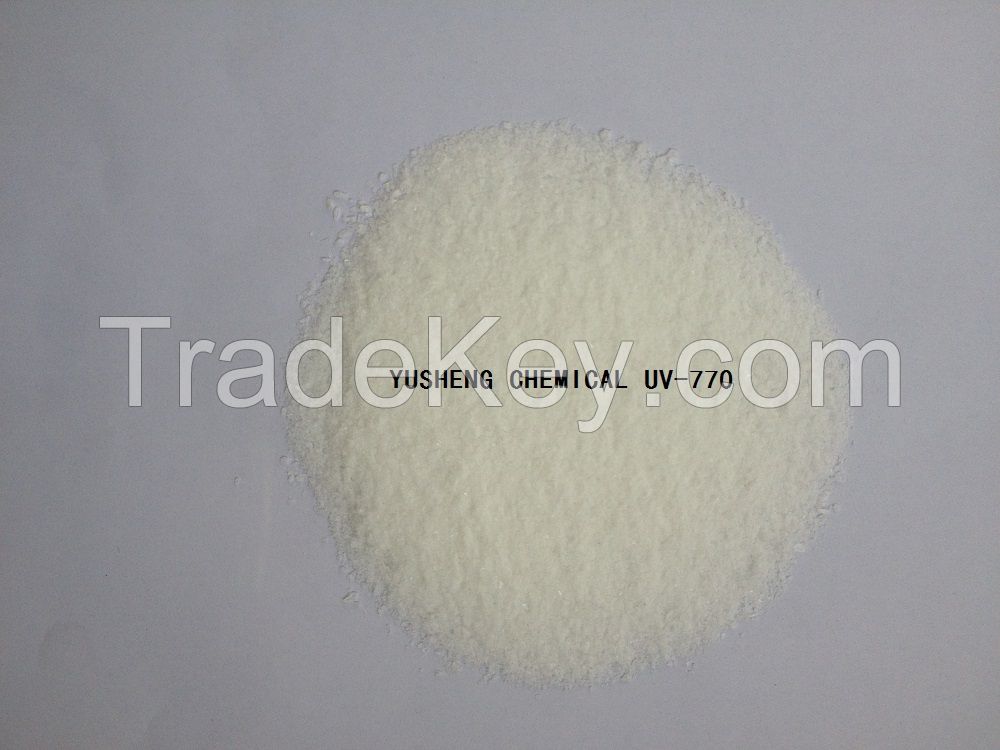
离岸价格
获取最新报价|
Minimum Order
位置:
-
最小订单价格:
-
最小订单:
100 Kilogram
包装细节:
25KG/carton, 500kg/pallet
交货时间:
as per order requirement
供应能力:
-
付款方式:
-
联系人 Elly
NO12 Chunhui Road Laishan District,Yantai City,China, Yantai, Shandong
Chemical Name : Bis(2,2,6,6-tetramethyl-4-piperidyl) sebacate
Molecular Formula : C28H52O4N2
Molecular Weight : 480.74
Structure : YS 770
.png)
CAS NO : 52829-07-9
Physical and Chemical Properties :
Appearance and behavior : White crystalline power or granules , odorless
PH-Value (1% suspension in water 20~25℃) : 9.67
Melting/Freezing Temperature : 80~86℃
Density (20℃) : 1.05g/cm3
Flash Point : >150℃
Ignition Temperature : 330℃
Water Solubility (20℃) : < 1mg/L
Vapor Pressure (20℃) : 1.3E-8 Pa
Partition Coefficient (Log Pow, 20~25℃) : 0.35
Transmittance : 425nm≥98.0% ; 500nm≥99.0%
Solubility (g/100g solvent , 20℃)
|
Solvent |
Acetone |
Ethyl acetate |
benzene |
water |
|
solubility |
19 |
24 |
46 |
< 0.01 |
Introduction :
YS 770 is a low molecular weight hindered amine light stabilizer(HALS) that provides excellent light stability for thick sections、films and tapes in the recommended substrates , particularly in PP thick sections. It has broad compatibility and can be easily dispersed.
Compared to conventional UV-absorbers , the effectiveness of YS 770 is less depend on the polymers thickness. For this reason , the use of YS 770 also provides good light stability in materials with high specific surface, e.g. films and tapes.
Combined with other HALS, YS 770 could perform better effectiveness, e.g. YS 791
Applications :
YS 770 is recommended to be used in polypropylene , impact modified PP(TPO) , EPDM , polystyrene , impact polystyrene , ABS , SAN , ASA and polyurethanes and is also effective in polyamides and polyacetal.
Guidelines for use :
The recommended concentrations range between 0.1% and 0.5% , depending on the substrate , processing conditions and application. YS 770 has low toxicity. In Japan 、Canada 、America etc , YS 770 could be used in polyolefin plastic which contacts food directly. The maximum concentration is 0.5% in Japan and America and is 0.35% in Canada.
Handling and Safety :
In accordance with good industrial practice , handle with care and unnecessary personal contact. Avoid contact with eyes. Avoid release to the environment. Avoid dust formation and ignition sources. For more detailed information please refer to the material safety data sheet.